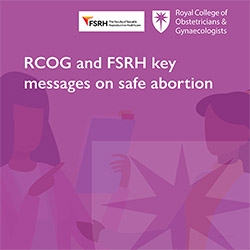Safe abortion saves lives.
Unsafe abortions are among the leading causes of maternal mortality and morbidity worldwide.
The risk of dying from an unsafe abortion is highest for people in Africa, where nearly half of all abortions happen in potentially dangerous circumstances.
Almost every injury and death from unsafe abortion is preventable with the use of effective contraception, provision of safe abortion, and timely post-abortion care.
The legal status of abortion does not affect the number of women and girls seeking one, but the prevalence of unsafe abortion is greatest in countries with restrictive abortion laws.
Abortion is healthcare.
Safe abortions are an essential part of sexual and reproductive health; they should be an integrated component of sexual and reproductive healthcare and be available as part of routine health services.
Abortions can be safely provided by healthcare professionals such as midwifes and nurses and should be safe, legal, high quality and accessible (i.e. affordable and local).
Safe abortion care should be guaranteed as part of a human rights-based framework to health.
Abortions are safe when carried out following WHO or RCOG Guidelines.
Safe abortions should be readily available and affordable for all who need them.
Abortions following WHO or RCOG guidelines and use recommended methods appropriate to the pregnancy duration are safe.
Major complications and mortality due to abortions are rare at all stages of a pregnancy and, if performed in line with clinical best practice, are safer than continuing a pregnancy to term.
Safe abortion benefits healthcare systems
The cost of treating complications from unsafe abortions can place a significant burden on health systems, especially in resource-low environments.
Safe abortion not only saves lives, but also saves money.

